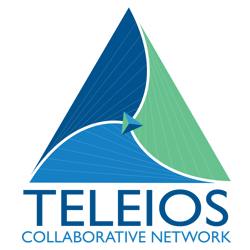A couple of months ago I ordered my groceries online and went to pick them up as I have done a dozen times. I had ordered a bunch of fresh cilantro as part of the order. When I got home and unloaded the groceries, I noticed I had received a tiny little box of organic dried cilantro which was three times more expensive than the bunch of fresh cilantro I had ordered and paid for.
I called the store to let them know of the mishap and to inquire about getting it exchanged with the correct fresh bunch of cilantro that I needed. The pickup department manager apologized and then stated, “You know, the new girl put your order together and I trained her myself. It never occurred to me that I needed to make sure they know what each produce item is.” This was a profound statement which I pondered all the way home from making the exchange. The operational and financial impact of this mishap could be significant to this organization if these types of mistakes were to continue . This made me think about the way we lead and the way we train. Are we clear and thorough, covering every detail to ensure that our staff members know the vision, mission, and goals of our organization? Have we been intentional with our communication and provided clear processes, directions, explanations, and communication? OR… Do we often leave room for “Cilantro Mishaps”?
As I pondered, I thought back over the years of my own leadership through hiring and training new employees. Some of the onboardings of the past I felt pretty good about, some just ok, while a lot of them I realize I could have facilitated so much better and provided much more clarity and direction. There are so many times orientations are rushed and extremely important information is missed. Many times, this is because the vacancy of the position has put a strain on the rest of the team and workloads are overflowing. How many times have we, in the hospice industry or healthcare in general, operated by the following statement: “We need to get them up and running ASAP!”? Our thought process creates a serious margin for error and a recipe for missing information during the onboarding process thus creating a lack of successful training for our new staff member. There are also many other possibilities that could be putting an organization at risk for “cilantro mishaps”. Perhaps some examples are as follows:
- underdevelopment or disorganization of the onboarding process
- the leader could be new to the leader role and not have a clear understanding of the onboarding process within the organization
- the roles of persons involved in the onboarding process could be unclear regarding who is responsible for what parts of the process with the new employee
- the leader could feel that some of the need to know is rather elementary and a given to a seasoned professional
- maybe the leader and the employee have worked together previously, and the familiarity gets in the way of the depth needed for a successful onboarding in the new organization

Regardless of the reason for substandard orientation, the success of an employee depends greatly on the investment made during their onboarding to the organization. It is vitally important that we as leaders take a good look at our thought process as we begin to onboard new employees.
- Are we present?
- Are we feeling rushed?
- Do we have purpose to each step we are completing with the new team member?
- Do we know the onboarding process and the goals that need to be obtained?
- Do we fully understand the “why” of each parts of the onboarding process?
- Are we creating the culture desired through the orientation process?
- Are we leaving information out because we think it is already known?
- Are we making a purposeful investment into the new employee to ensure they have every opportunity to be successful at our organization?
- Do we take time to find out what the employee already knows and start where they are?
- Do we make assumptions and potentially leave out vitally important information because of our assumptions?
As you reflect upon your own leadership in regards to the onboarding process and the investment you make when working with new employees, I encourage you to consider these questions as potential ways to strengthen the onboarding process of your organization as well as strengthen your leadership and ensure that we are not recreating a “Cilantro Mishap”.
Edie Riddlespurger,Clinical Operations Coach


Program Launch: January 21-22, 2021
Discover More
Register Today!
Download the eBook below and
unlock your true self-leadership potential.
Download eBook


An organizational model that allows not-for-profit hospices (Members) to leverage best practices, achieve economies of scale and collaborate in ways that better prepare each agency to participate in emerging alternative payment models and advance their charitable missions.







